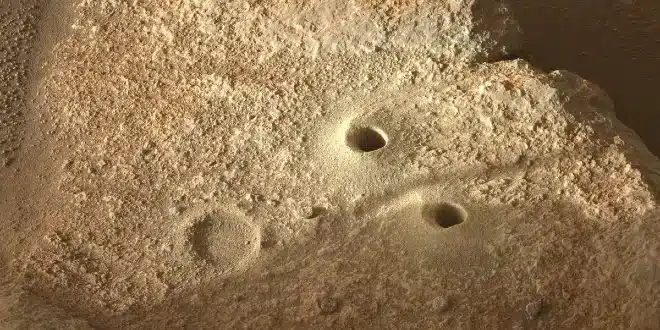The European Space Agency’s (ESA) ExoMars Trace Gas Orbiter has captured a striking “smiley face”-shaped salt deposit on Mars, sparking curiosity and amazement among online observers.
Scientists believe that this salt deposit may hold clues to the possibility of ancient life on Mars. Billions of years ago, the Red Planet was home to vast lakes and rivers, which vanished during a global freeze. Researchers suggest that the smiley face-shaped salt deposit might be preserving resilient microbes that survived these harsh conditions.
This image was captured by ESA’s ExoMars Trace Gas Orbiter, a satellite dedicated to exploring Mars in search of signs of life. The orbiter has been capturing breathtaking images of chloride salt deposits scattered across Mars’ dry surface. These salt formations could provide valuable insights into the planet’s past climate, geology, and potential habitability.
A post shared by the ESA described the significance of the discovery: “Once a world of rivers, lakes, and possibly oceans, Mars now reveals its secrets through chloride salt deposits found by our ExoMars Trace Gas Orbiter. These deposits, remnants of ancient water bodies, could indicate habitable zones from billions of years ago. The discovery of nearly a thousand potential sites offers new insights into Mars’ climate and potential for past life.”
Valentin Bickel, a planetary scientist at the University of Bern in Switzerland, shed more light on these salt deposits. He explained that after Mars lost its magnetic field, the planet could no longer hold its atmosphere, causing water to either evaporate, freeze, or become trapped below the surface. As the water disappeared, it left mineral traces behind. According to Bickel, very salty waters could have provided a refuge for life, as salt allows water to remain liquid even at temperatures as low as minus 40 degrees Celsius, offering possible habitats for ancient Martian life.


